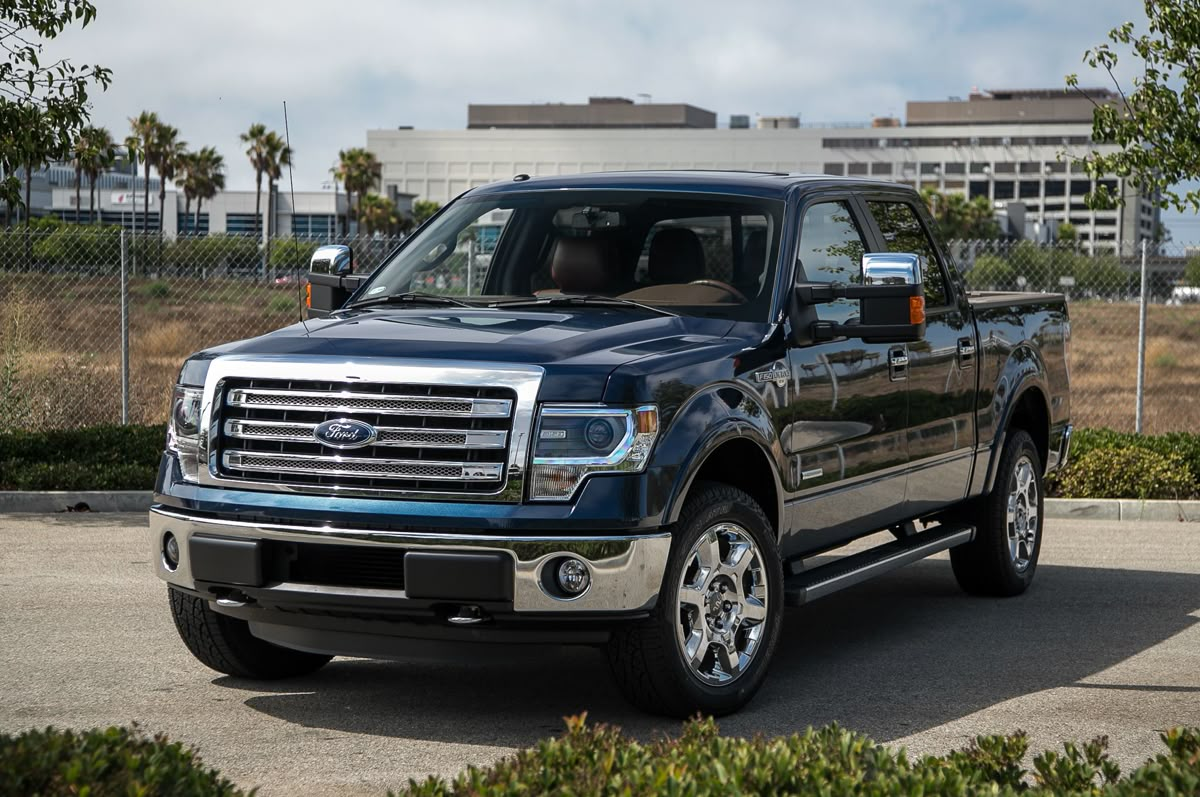Tow-hitch height—it’s the silent dealbreaker in towing harmony. While torque specs, payload ratings, and 4×4 systems steal the spotlight, it’s the hitch height that determines if your trailer hooks up flush or fights back with a vengeance.
It might seem minor to the untrained eye, but for seasoned towers and payload pushers, hitch height tolerance is everything. It spells the difference between a hassle-free haul and a scrambled search for adapters and drop hitches at the eleventh hour.
Manufacturers talk about “tow-ready” as if it’s standard, but not every pickup makes it as seamless as they claim. Some trucks arrive like a Swiss army knife—ready to hook up to a wide range of trailers with minimal tweaking.
They’ll leave you squinting at hitch measurements, especially if you’re swapping between a camper, utility trailer, or boat hauler. Height mismatches are more common than you’d expect.
So, let’s break it down. In this blog, we’ll look at 5 pickups with the most forgiving, plug-and-play tow-hitch heights—the ones that don’t need constant fiddling.
Then we’ll expose 5 pickups that, despite their brawn, often need drop hitches, risers, or custom adapters to meet standard trailer couplers. As always, this list is based on real-world usage, not just manufacturer specs.
5 Pickups with the Most Tolerant Tow-Hitch Heights
These trucks offer versatile hitch heights that fit a wide range of trailers straight off the lot. Whether you’re hauling a utility flatbed, a camper, or a boat, these five pickups bring adaptability to the table. They keep you towing with fewer adjustments, making them a top pick for mixed trailer owners and frequent haulers alike.
ALSO READ: 5 SUVs With Best In-Car Wi-Fi and 5 With Weak Hotspots
1. Ford F-150 (2021–Present) – The Jack-of-All-Hitches
When it comes to matching trailer couplers without much tweaking, the modern Ford F-150 shines. Whether you go for the base XL or a fully loaded Platinum PowerBoost hybrid, the tow-hitch height on this rig hovers at that sweet spot—around 20 inches unloaded. That makes it a perfect match for many utility trailers and smaller RVs without reaching for a drop hitch.
The F-150’s adaptive suspension, especially on models equipped with FX4 or towing packages, means minimal sag or lift. This keeps the hitch height stable whether loaded or empty.
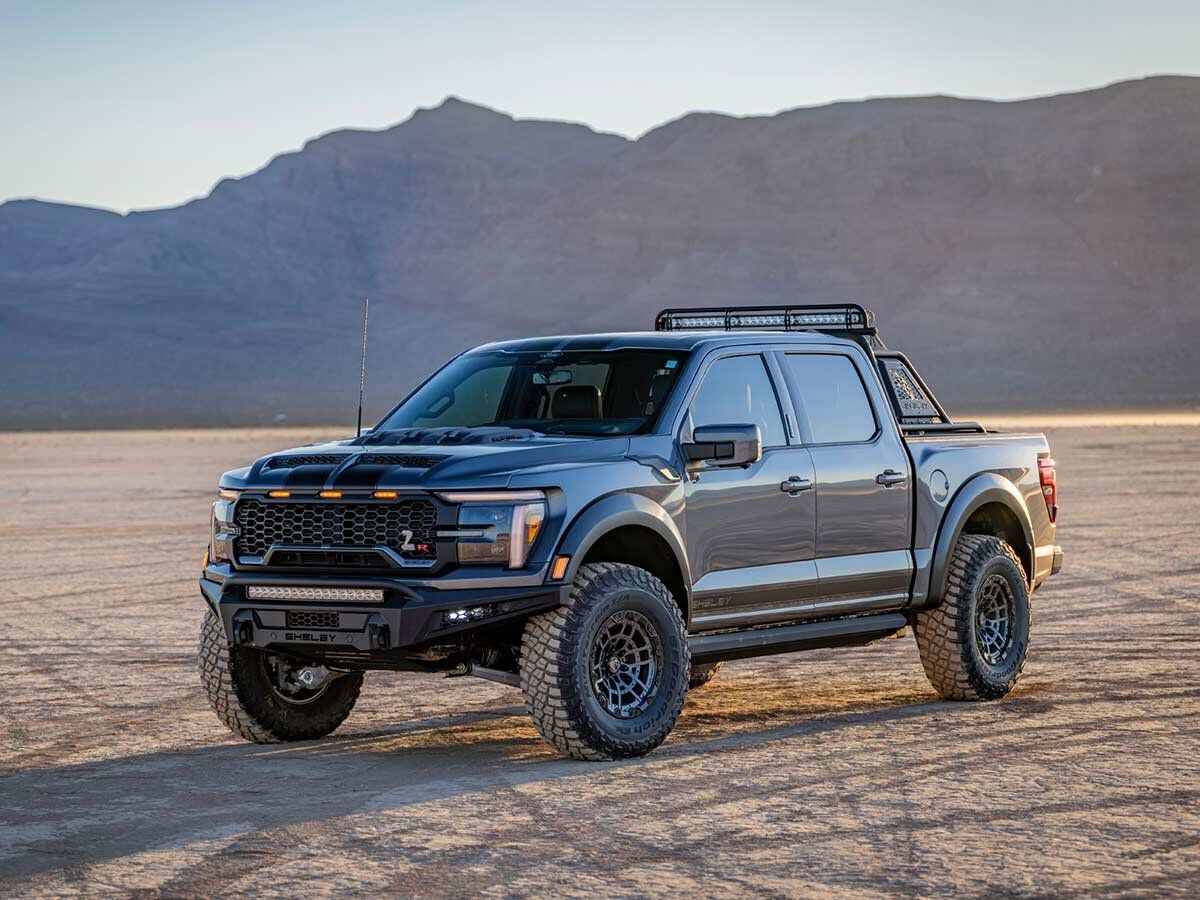
With a Class IV hitch as standard on higher trims and available Pro Trailer Backup Assist, it’s not just about height—it’s about confidence when towing.
Add in factory-integrated trailer brake controllers and dynamic hitch assist, and it’s clear Ford did its homework. What’s often overlooked is how effortlessly it lines up with typical trailer heights. This means less metal clanking, easier weight distribution, and no need for 3-inch drop hitches unless you’re doing something extra-special.
In a world full of spec sheets, Ford’s real-world towing usability makes it stand out. It’s built to connect with whatever’s behind it, without pulling out a tape measure or a wrench.
2. Ram 2500 (2020–Present) – Height Harmony with Heavy-Duty Guts
The Ram 2500 strikes a golden balance between brawn and brains, and that extends to its trailer-hitch height. While many ¾-ton trucks sit high and mighty, making them a tough match for smaller trailers, the Ram 2500—especially in the rear coil spring configuration—offers just enough drop to keep its hitch height in a usable range. Most owners report a loaded hitch height between 19.5–21.5 inches, depending on trim and tires.
Ram’s rear suspension design softens sag without exaggerating rake, meaning your trailer doesn’t point skyward under load. With an available auto-leveling rear air suspension, even heavier trailers don’t affect alignment much. It’s like having a built-in anti-adapter system.
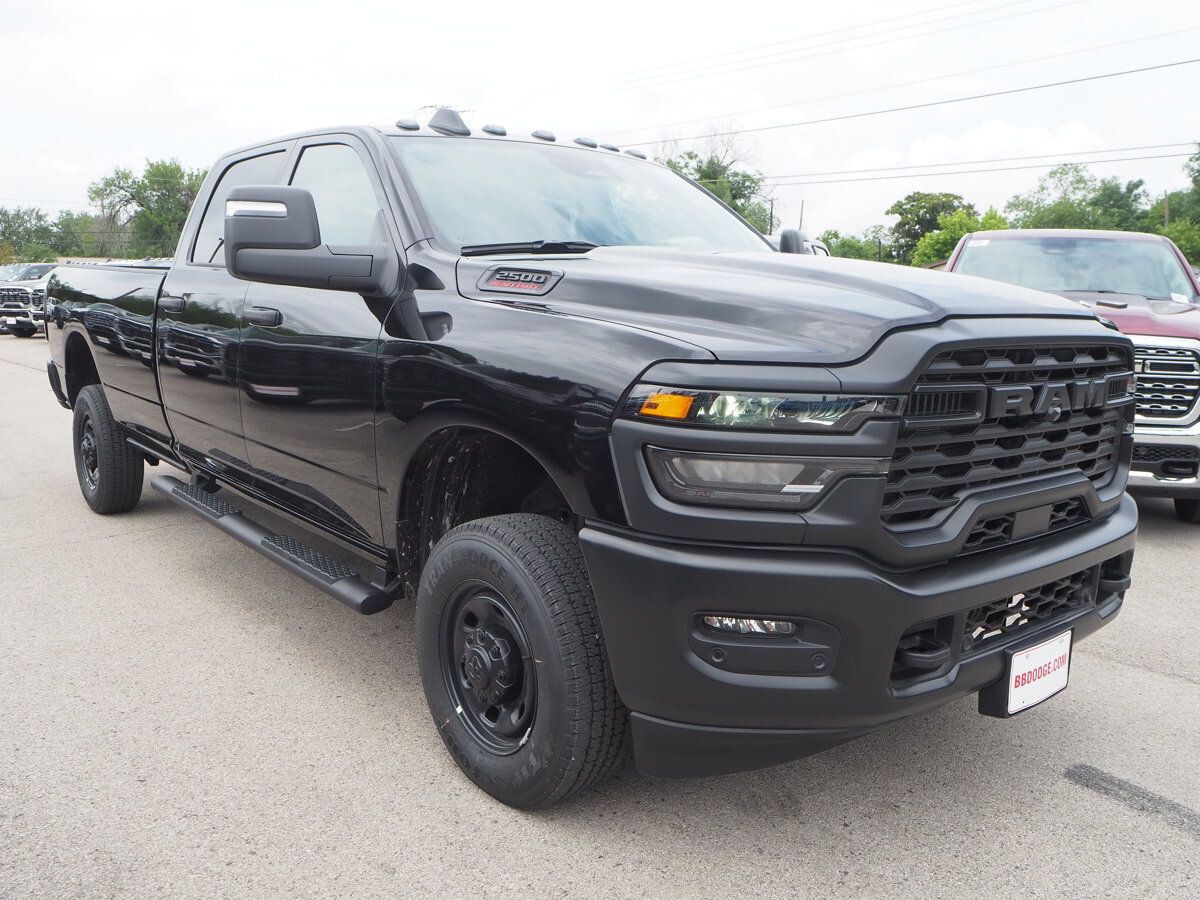
It helps that the factory hitch receiver is generous in clearance and robust in rating, especially on Cummins diesel models with the Max Tow Package. Whether you’re pulling a car hauler, livestock trailer, or a dual-axle RV, the Ram 2500 usually connects with minimal fuss.
Plus, you won’t constantly need to adjust for load changes. With smart engineering and adaptable suspension tech, this pickup earns its place on this list not just for raw towing power, but for how elegantly it handles the deceptively tricky business of hitch height alignment.
3. Chevrolet Silverado 1500 (2019–Present) – Level-Headed and Hook-Up Ready
The Chevy Silverado 1500 may not shout about its hitch specs in marketing materials, but anyone who’s trailered with one knows it hits a towing sweet spot. Right from the factory, most Silverado trims offer a hitch height that hovers around 19.5 to 20.5 inches unloaded—a near-perfect fit for most standard trailers.
More importantly, it maintains this practical height consistently. Even with heavy payloads, the truck’s multi-leaf rear suspension and optional Z71 off-road package don’t cause drastic rake shifts or rear lift. That’s especially true for models with integrated trailer sway control and optional automatic rear load leveling.
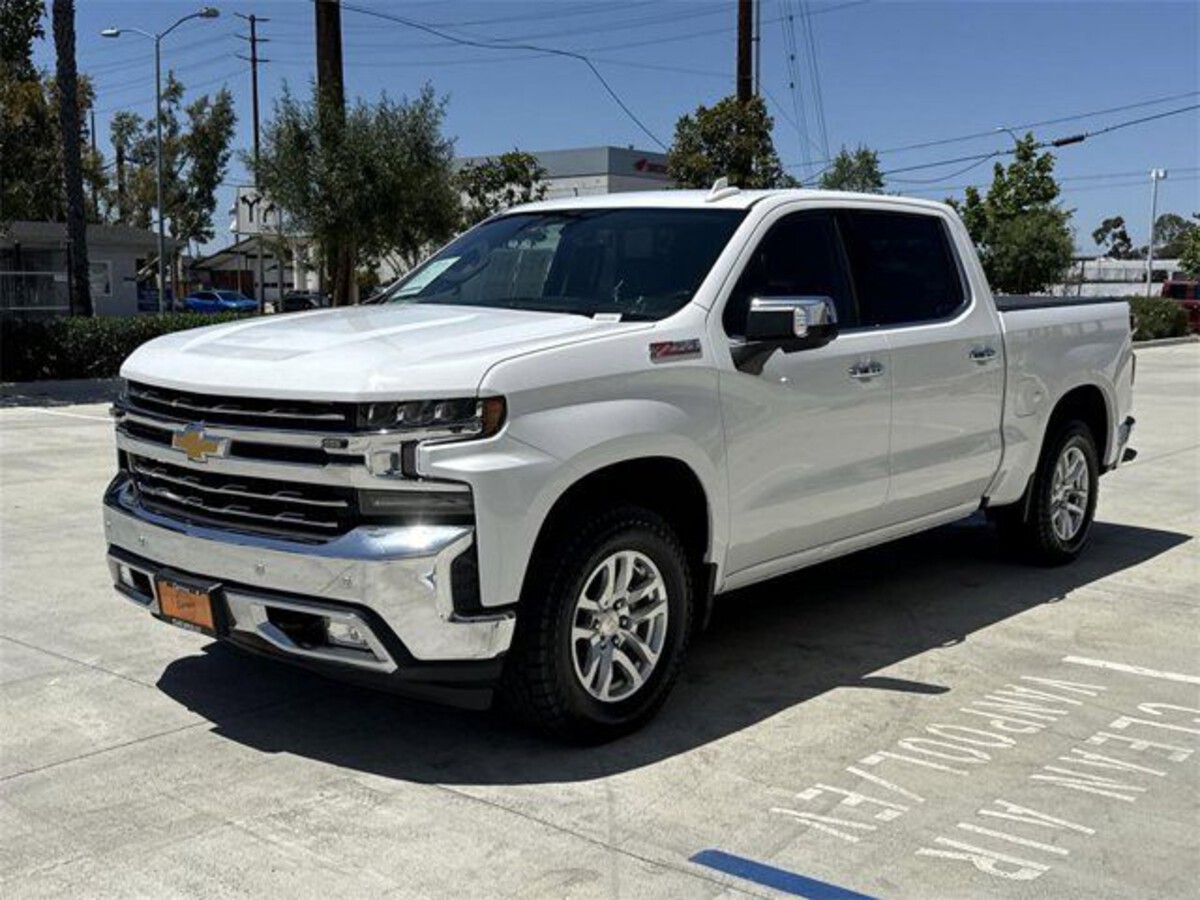
The Silverado’s trailer-friendly geometry extends to a wide, accessible hitch zone. It’s easier to reach, even if you’re backing in at night or on uneven ground. Plus, GM’s advanced trailering system with trailer profiles, light checks, and alignment assist means it’s not just about height—it’s about ease.
Unlike some trucks that require adapter juggling depending on trailer height, the Silverado just works. That makes it a top choice for tower who move between different trailers frequently. It’s simple, smooth, and just low enough to keep adapters off your tool list.
4. Toyota Tundra (2022–Present) – Adaptive Clearance, No Tools Needed
The new-generation Toyota Tundra came in swinging with a twin-turbo V6 and a coil-sprung rear suspension that surprised many. But what really earns it a place here is how smartly it manages hitch height. Factory measurements show an average height of 20 inches at the receiver, which is about as neutral and adaptable as it gets.
More impressively, the Tundra’s rear doesn’t jump or squat aggressively when loaded. Its multi-link setup paired with load-balancing keeps things stable, reducing the need for offset hitches or hitch balls on risers. Toyota clearly paid attention to real-world towing ergonomics when designing this.
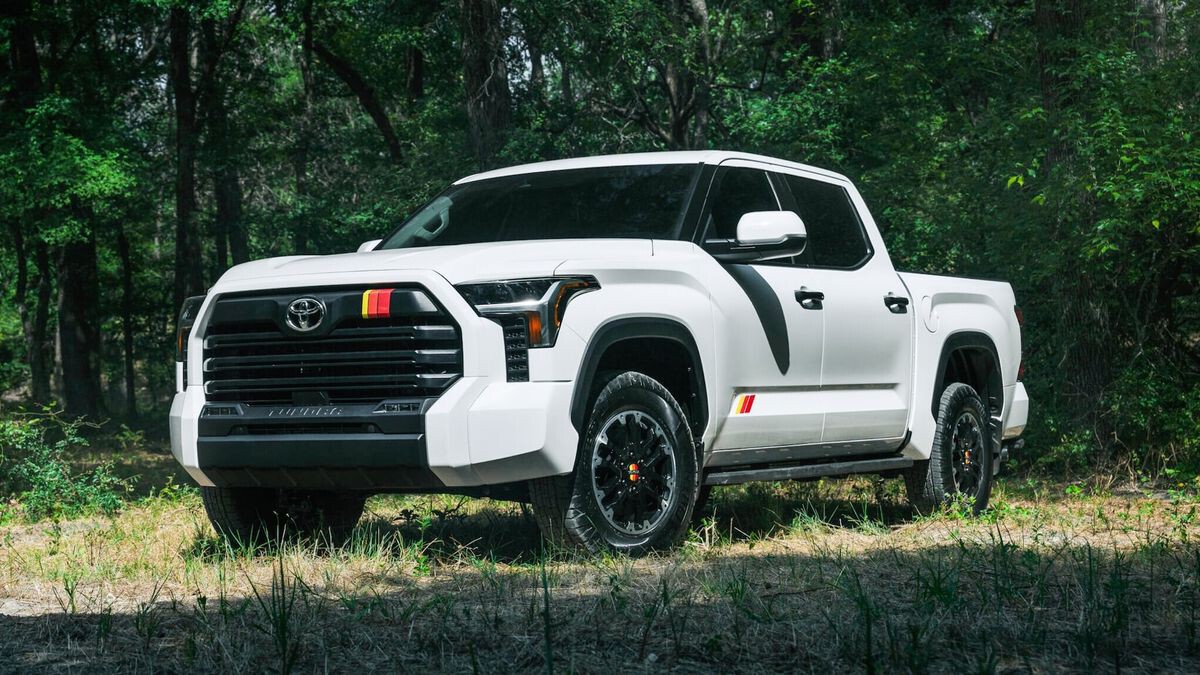
Tundra’s tow tech, like the Trailer Backup Guide and Straight Path Assist, is great, but it’s the physical design that deserves applause. With an integrated Class IV receiver and pre-wired trailer connections, you’re already ahead. Hook up your camper or cargo hauler, and odds are, you’re good to go.
If you’re switching between various types of trailers, the Tundra keeps life simple. No drop hitch? No problem. It’s a fit-it-and-forget-it kind of experience—rare in the ever-finicky world of trailer alignments.
5. Nissan Titan XD (2016–2023) – The Unsung Hero of Hitch Compatibility
The Titan XD didn’t exactly dominate the sales charts, but when it comes to towing usability—especially hitch height—it’s a hidden gem. Straddling the line between half-ton and three-quarter-ton pickups, it has just enough chassis drop to make hitching up easier than its heavy-duty rivals.
With a rear receiver height around 20 inches unloaded and modest rake even with a full bed or tongue load, the Titan XD stays surprisingly level. That means less guesswork and fewer aftermarket solutions. Owners pulling boat trailers, car haulers, or camper setups consistently report plug-and-play usability.
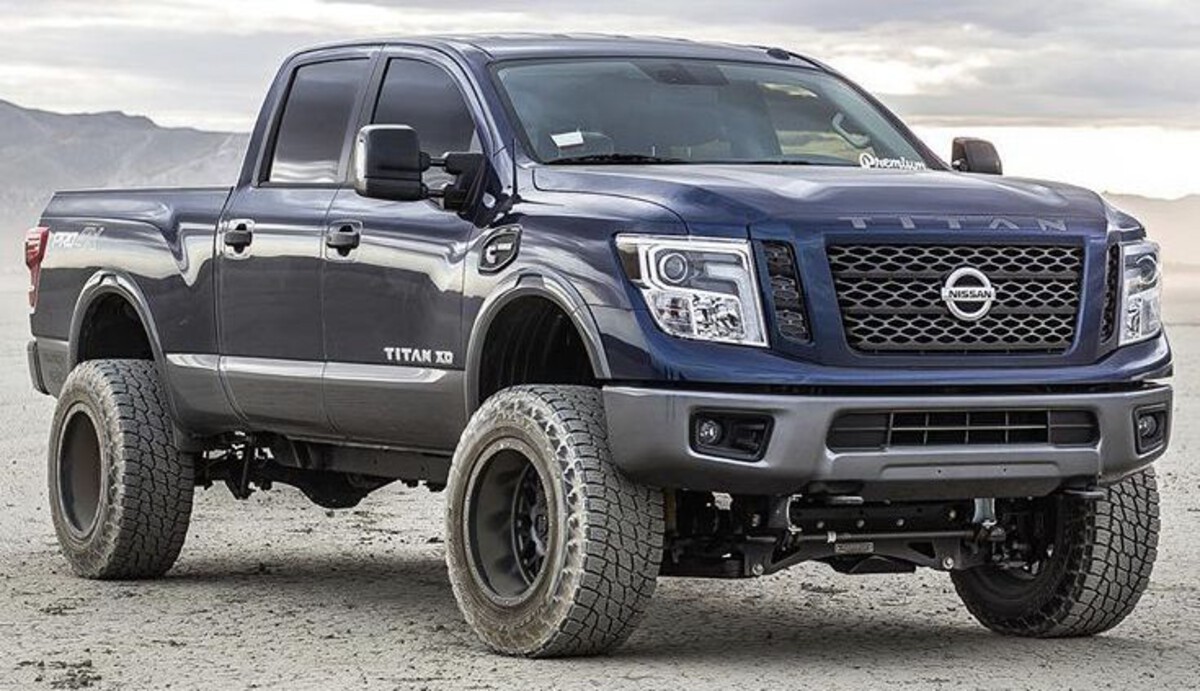
The XD’s integrated gooseneck prep package and Class V receiver also make it a flexible towing machine, and it doesn’t force you to climb into the lifted-truck league. Even stock, it’s remarkably easy to pair with common trailer sizes.
It’s not the loudest or flashiest player on the field, but for drivers who care about practical towing without tinkering, the Titan XD punches above its weight. It’s the pickup equivalent of that friend who always shows up prepared, ready to tow, right from the tailgate.
5 Pickups Requiring Adapters
These trucks may boast heavy-duty credentials or sleek off-road packages, but their hitch heights often miss the mark for standard trailers. Whether due to lift kits, suspension geometry, or aggressive rake, these models frequently require drop hitches, risers, or even custom-fit adapters. They’re capable towers—but not without a few tools in your back pocket.
ALSO READ: 5 Trucks With the Lowest Idle-Fuel Use and 5 Guzzling at Stoplights
6. GMC Sierra 1500 AT4 (2019–Present) – The Price of Off-Road Flair
The GMC Sierra AT4 is loaded with rugged good looks, off-road tuning, and a factory lift. But that 2-inch suspension boost? It comes at the cost of hitch compatibility. The average hitch height sits around 22–23 inches unloaded, just high enough to require a drop hitch for most trailers.
Even basic utility trailers may look skyward when hitched, creating risky angles that mess with weight distribution and brake effectiveness. If you’re regularly switching trailer types or towing in varied terrain, you’ll find yourself reaching for drop mounts more often than not.
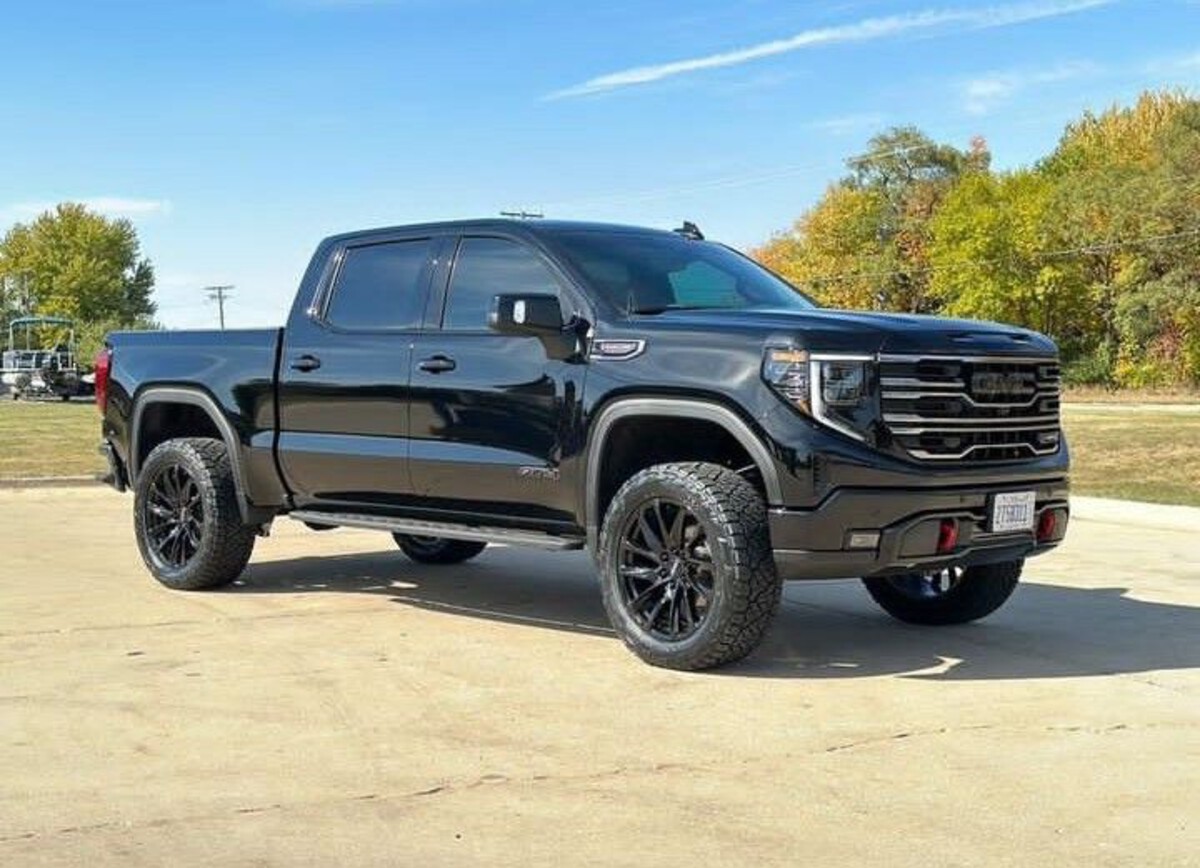
It’s not that the AT4 isn’t capable—it’s that its suspension is tuned for clearance, not compatibility. Add in larger tires, and suddenly you’re running with a hitch that barely lines up with anything factory-standard.
Despite excellent onboard tow tech, including an advanced trailering system and camera integration, the Sierra AT4 is one of those pickups where looks and lift slightly outweigh universal usability. A great truck—just don’t forget to budget for hitch hardware.
7. Toyota Tacoma TRD Pro (2016–Present) – Off-Road Soul, Awkward Hitch Angle
Beloved by overlanders and trail riders, the Toyota Tacoma TRD Pro shines off the pavement—but throw a trailer behind it, and hitch height becomes an issue. This midsize brute has a factory lift and stiffer rear suspension, pushing hitch height up to around 22–23 inches unloaded. It may not sound drastic, but for a lightweight camper or flatbed trailer, it often means uneven connections.
That tall stance, especially with stock 16-inch off-road tires, makes trailer hookup a hassle. Even simple utility trailers can’t sit level without at least a 2–4 inch drop hitch.
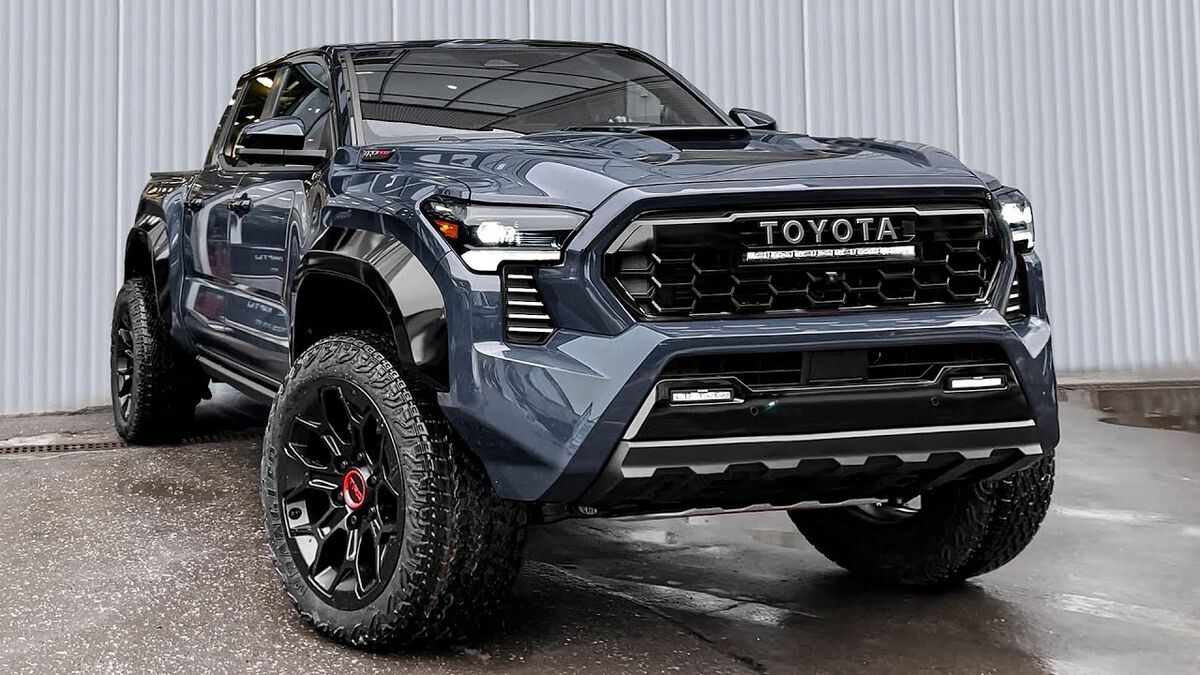
Tacoma owners know: if you’re not adjusting your setup, you’re inviting trailer sway and unpredictable braking.
The TRD Pro’s trail-ready tuning and skid plate setup push practicality down the list. While it features decent towing capacity (up to 6,400 lbs), it lacks rear load-leveling options or advanced hitch alignment tech. It’s a truck that begs to explore, but doesn’t quite get along with most towables out of the box.
If towing is a weekend habit and not a full-time duty, adapters can get the job done. But if you’re trailering often, the TRD Pro needs a bit more work than its competitors in this list.
8. Ram 1500 Rebel (2019–Present) – Suspension Swagger, Hitch Height Hassles
The Ram 1500 Rebel is a stunner—blending muscular looks, off-road prowess, and a plush interior. But those rugged bones, especially the 1-inch lift and off-road tires, make the Rebel’s hitch height problematic for everyday trailering. At 22–23.5 inches at the receiver, it stands taller than most standard trailer tongues are designed for.
Unlike the more adaptable Ram 2500, the Rebel’s factory lift and suspension tuning lean toward articulation over alignment. Tongue weight causes minimal sag, so the hitch rarely dips to standard heights, meaning you’ll often need a sizable drop hitch or custom riser setup to keep trailers level.
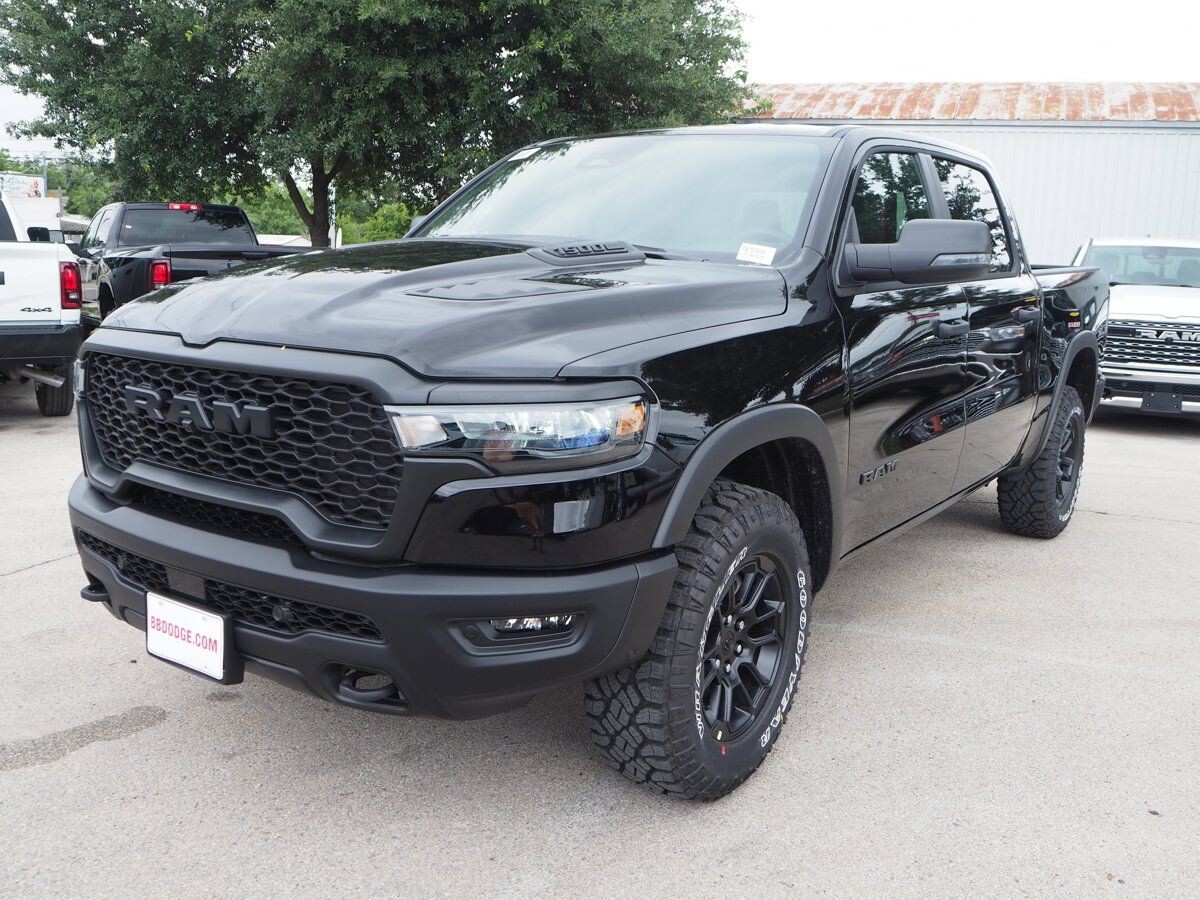
It’s not all bad—Ram does offer tech like Trailer Sway Control and an optional air suspension that helps, but even with the latter, the lowest ride height can still sit high for light-duty towing needs.
If you’re hauling ATVs on a lifted trailer or overlanding gear on an off-road trailer, it works. But for the guy pulling a boat or a small camper? The Rebel’s hitch height almost always needs adjustment. It’s a reminder that off-road swagger doesn’t always translate into everyday towing convenience.
9. Chevrolet Colorado ZR2 (2017–2022) – Mid-Size Muscle, Tow-Hitch Trouble
The Chevy Colorado ZR2 is a nimble off-roader built for rock crawling and desert running, but that off-road pedigree causes a mismatch when it comes to hitch height. With a factory lift, multimatic DSSV shocks, and aggressive tires, the ZR2’s hitch height can sit around 23 inches unloaded. That puts it well above the comfort zone of most standard utility and travel trailers.
Because it’s a midsize truck, most assume it should line up perfectly with smaller trailers. Unfortunately, the ZR2’s taller stance disrupts that harmony. Owners regularly report trailer nose-up problems unless they install a 3–4 inch drop hitch.
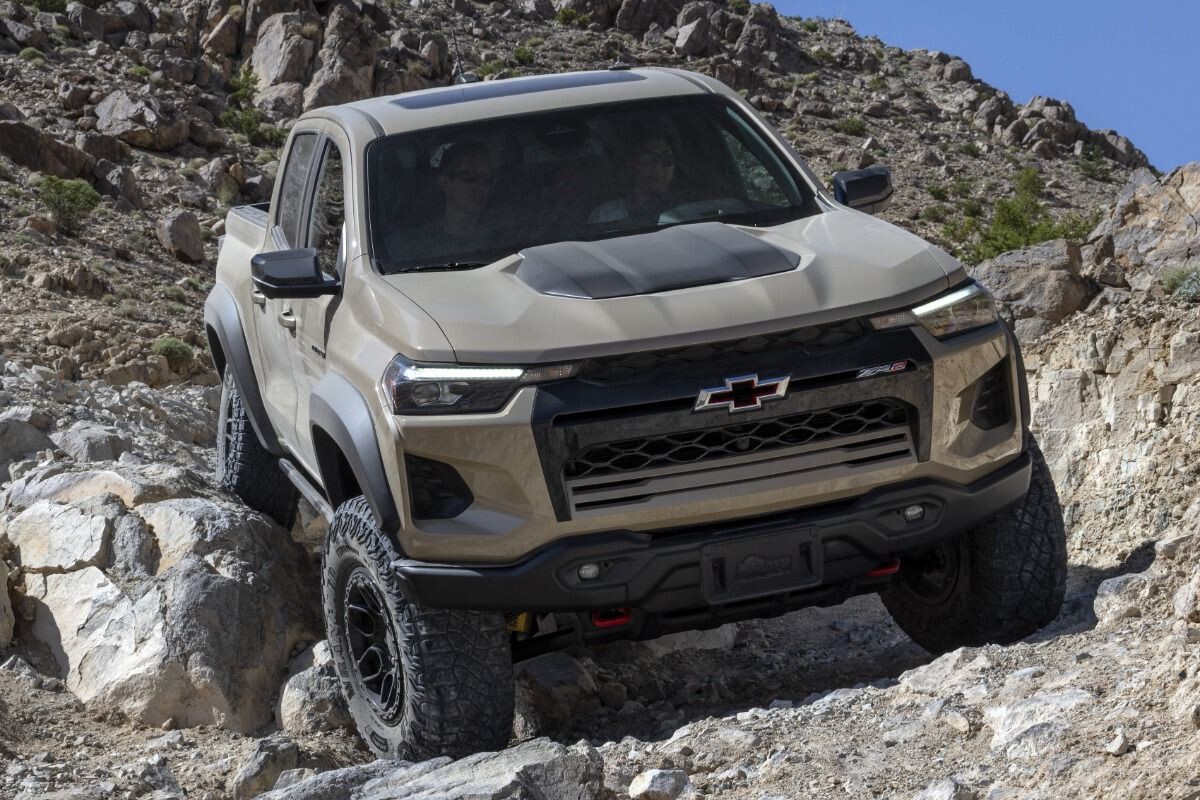
Chevy did equip the ZR2 with a standard trailer hitch receiver and decent towing electronics, but that doesn’t fix the geometric challenge of high hitch height and minimal squat. The truck’s off-road chassis keeps it rigid and high-riding, even under load.
It’s a truck that’s epic for trail fun and weekend escapes—but if you’re using it for routine towing (lawn trailers, small RVs, fishing boats), expect to invest in drop hitches and adapters. It’s built for the wild, not the work.
10. Ford F-250 Super Duty Tremor (2020–Present) – Too Tall for Standard Towing
Ford’s F-250 Super Duty Tremor is a towing beast, no doubt. With diesel torque and serious payload capacity, it hauls like a champ. But here’s the rub—it’s lifted stance and beefy tires push the rear receiver height well above 23 inches, and in some trims, even 24+ inches. That’s a good 3–4 inches taller than the industry sweet spot.
This wouldn’t be an issue if you were always towing equipment trailers or goosenecks. But for folks pulling everyday travel trailers, livestock haulers, or flatbeds, this height makes standard ball mounts obsolete. A heavy-duty drop hitch becomes an essential companion.
And since it’s a ¾-ton truck with stiffer rear springs, it doesn’t sag much even under full load.
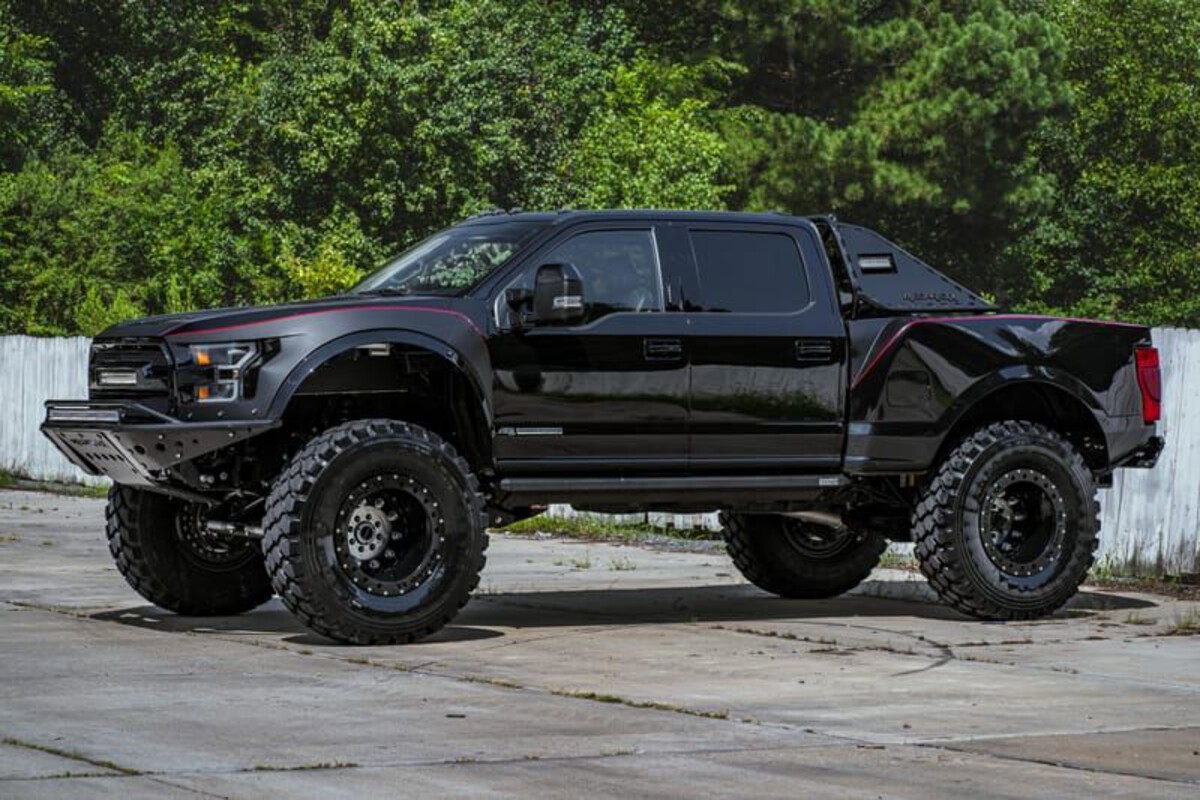
So you don’t get a “natural dip” that helps align the trailer tongue with the hitch. The Tremor is rock-solid, but that stability also keeps it high.
Ford’s Trailer Reverse Guidance, Pro Trailer Backup Assist, and integrated brake controllers are top-notch, but they can’t help you when your hitch and coupler don’t even meet halfway. If you love this truck for its sheer might, just make peace with the fact that you’ll need an adapter or two to make it tow-friendly for standard loads.
Tow-hitch height might not dominate dealership brochures or YouTube reviews, but once you start towing regularly, it becomes one of the most critical—and frustrating—details. It decides whether your trailer hooks up in one smooth motion or sends you scrambling for adapters, risers, and alignment fixes.
As we’ve seen, some pickups—like the Ford F-150, Ram 2500, and Toyota Tundra—manage to land in that ideal height zone. They make towing seamless, regardless of whether you’re pulling a flatbed, RV, or utility trailer. Their suspension setups, ride height, and receiver positions just make life easier.
On the flip side, trucks like the Chevy Colorado ZR2, Ford F-250 Tremor, and Toyota Tacoma TRD Pro may look aggressive and off-road capable, but their factory lift and suspension tuning often push their hitch heights outside the comfort zone of typical trailers. The result? More hardware, more planning, and more headaches.
So before you get wowed by specs and styling, ask yourself: how easily does this truck connect with what I actually tow? Because when you’re halfway through a six-hour haul, it’s not the horsepower that matters—it’s whether your trailer rides steady without a struggle. Too smart, two-level, and know your hitch.

